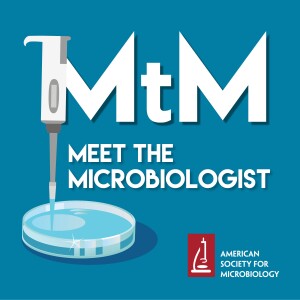
123: SAR11 and Other Marine Microbes with Steve Giovannoni
 2019-12-21
2019-12-21
The most abundant organism on Earth lives in its seas: the marine bacterium SAR11. Steve Giovannoni describes how the origins of SAR11 provided its name, and the ways that studying SAR11 have taught scientists about ocean ecology. He also discusses how the different depths of the ocean vary in their microbial compositions and what his big questions are in marine microbiology.
Different depths of the ocean have different habitats, but the microbes vary continuously, based in part on light availability:
Surface light facilitates photosynthesis by algal cells. These primary producers fix carbon for the entire ecosystem! Because nutrients are readily available, the cell concentration in surface waters can reach nearly 1,000,000 cells/ml. The twilight zone offers dim light. Microbes in this area mainly use carbon sources generated by the surface-dwelling microbes. Below a few hundred meters, cell concentrations drop to 10,000-100,000 cells/ml. The deep ocean has no light and the microbes that live here have significantly different biochemistries and metabolisms.SAR11 is small in both physical size and genome size (0.37–0.89 µm and 1.3 million base pairs, respectively). It is nevertheless the most abundant organism on the planet, with more than 1028 cells estimated to exist worldwide. These cells convert between 6-37% of the carbon fixed in the oceans daily. SAR11 in different niches have ecotypes with different specialties but look physically similar and have very similar genome sequences.
Naturally, the most abundant cells in the ocean have the most abundant parasites: bacteriophages called pelagiphages infect SAR11 all over the world. SAR11 and pelagiphages are under constant evolution, though there doesn’t seem to be a CRISPR system in the Pelagibacter genome; these bacteria largely use other mechanisms to evade phage infection.
SAR11 is like a house with the lights on all the time, in that the cells constitutively express most metabolic genes. For example, SAR11 metabolizes dimethylsulfoniopropionate (DMSP) into dimethyl sulfide (DMS) and methanethiol (MeSH), which can be produced as soon as the cells are exposed to DMSP. While this may seem energetically expensive, the cells must capitalize on their encounters with this transient resource, often found only at low concentrations, and this capitalization requires the investment of protein production. The cost of metabolic gene regulation outweighs the benefits in this particular case.
SAR11 and SAR202 are the poles on the spectrum of heterotrophic marine bacteria. SAR11 is very efficient at accessing and using the organic compounds that come from the phytoplankton (also called the labile organic matter). SAR202, found in the deeper part of the ocean, specializes in hard-to-access carbon compounds that other bacteria can’t access.
More Episodes
 2008-12-08
2008-12-08
 2008-10-02
2008-10-02
 2008-09-25
2008-09-25
Create your
podcast in
minutes
- Full-featured podcast site
- Unlimited storage and bandwidth
- Comprehensive podcast stats
- Distribute to Apple Podcasts, Spotify, and more
- Make money with your podcast
It is Free
- Privacy Policy
- Cookie Policy
- Terms of Use
- Consent Preferences
- Copyright © 2015-2024 Podbean.com




